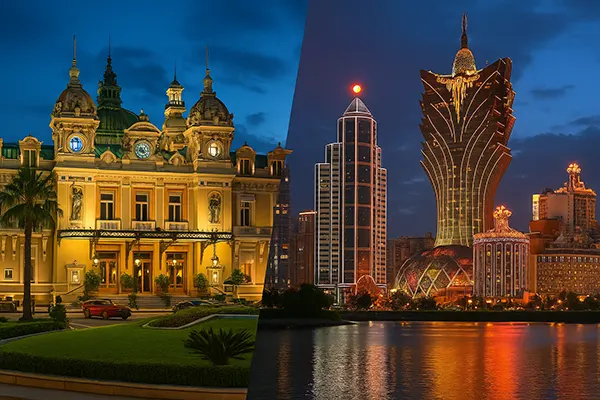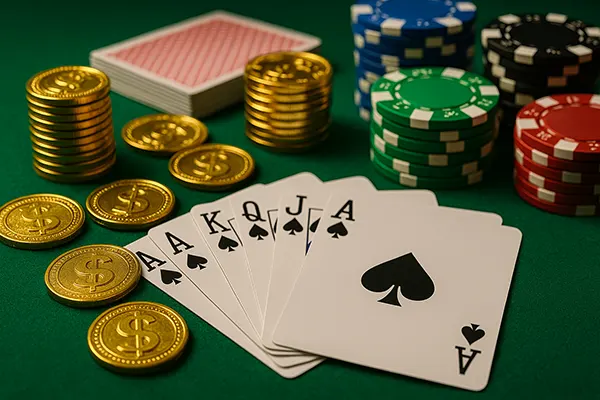
Casino Culture: From Monte Carlo to Macau
Casino culture has always reflected the social, economic, and cultural transformations of different regions. From the aristocratic elegance of Monte Carlo in the 19th century to the glittering towers of modern Macau, casinos are more than just places of entertainment – they are symbols of history, status, and global change. This article explores how these two major destinations shaped the image of gambling worldwide and why they continue to influence the industry in 2025.
The Legacy of Monte Carlo
Monte Carlo, part of the Principality of Monaco, established itself as a luxurious centre of gambling in the mid-19th century. The opening of the Casino de Monte-Carlo in 1863 transformed the small state into a haven for Europe’s elite. Aristocrats, writers, and royalty visited not only to play but also to socialise in an atmosphere of refinement and prestige.
The architectural splendour of the casino, designed by Charles Garnier, gave Monte Carlo a reputation for sophistication. It was never simply about the games but about the lifestyle associated with them. The Riviera became a destination for culture, art, and high society gatherings, reinforcing the casino as a central element of the region’s identity.
Today, Monte Carlo maintains its prestige by combining tradition with innovation. While many gambling venues worldwide focus on large-scale mass tourism, Monte Carlo continues to attract those seeking exclusivity, privacy, and elegance. Its legacy has set a global benchmark for the aesthetics and social role of gambling houses.
Monte Carlo’s Impact on European Gambling
Monte Carlo’s influence extended far beyond Monaco. Many European countries observed how the principality used gambling revenues to stabilise its economy and invest in public projects. This inspired other regions to consider regulated gambling as a tool for economic development.
The European model of regulated casinos, focused on strict dress codes, controlled access, and state oversight, was largely shaped by Monte Carlo’s approach. It promoted gambling as an activity tied to cultural identity rather than pure profit.
Even in 2025, Monte Carlo is regarded as a symbol of elegance and exclusivity, maintaining a heritage that connects the past with the modern age of international gaming tourism.
Macau: The World’s Gambling Capital
Located on the southern coast of China, Macau rose to global prominence after the liberalisation of its gambling industry in 2002. International operators, particularly from Las Vegas, invested heavily in developing large integrated resorts, transforming the city into the most profitable gambling hub in the world.
Unlike Monte Carlo, which is associated with luxury and exclusivity, Macau became famous for scale and diversity. The city attracts millions of visitors from across Asia each year, offering everything from baccarat tables to mega-resorts with theatres, shopping centres, and fine dining. Its revenues have consistently surpassed those of Las Vegas since 2006.
In 2025, Macau continues to reinvent itself, focusing on balancing mass-market gaming with non-gaming entertainment. This diversification aligns with government policies encouraging sustainable growth and tourism beyond gambling alone.
The Cultural Identity of Macau’s Casinos
Macau’s casino culture is deeply rooted in Chinese traditions, particularly the popularity of baccarat and other card games that resonate with local players. Unlike in Europe, where roulette and poker dominate, baccarat became the cultural symbol of Macau’s gambling industry.
The city also reflects the blend of Portuguese colonial history and Chinese heritage. Architectural elements of resorts often incorporate both Western and Eastern motifs, making Macau a cultural bridge as well as a gambling destination.
As of 2025, Macau plays a dual role – it is both a commercial hub for global operators and a cultural landmark that embodies the unique synthesis of European and Asian influences.

Global Influence and Future Trends
Monte Carlo and Macau represent two contrasting but equally influential models of casino culture. One emphasises exclusivity and tradition, the other mass appeal and modern integration. Together, they have shaped how gambling is perceived in different parts of the world.
In recent years, the global industry has faced challenges such as economic fluctuations, health crises, and growing regulation. Yet both Monte Carlo and Macau have demonstrated adaptability by introducing responsible gaming measures and expanding beyond traditional gambling activities.
Looking ahead, experts predict that the cultural symbolism of these locations will remain strong. While new markets like Singapore and the Philippines are gaining attention, Monte Carlo and Macau continue to hold iconic status that reinforces their role as reference points for the entire global gambling industry.
The Lasting Symbolism of Casino Culture
The continuing relevance of Monte Carlo and Macau shows how casino culture transcends simple gaming. These destinations are not only financial engines but also cultural landmarks, shaping art, architecture, and social behaviour.
Their influence extends into literature, cinema, and popular imagination, portraying casinos as spaces where wealth, chance, and culture intersect. James Bond’s cinematic visits to Monte Carlo or the neon-lit images of Macau testify to this enduring appeal.
In 2025, the story of casino culture remains incomplete without Monte Carlo and Macau. They serve as historical anchors and modern innovators, connecting tradition with the evolving landscape of global entertainment.
